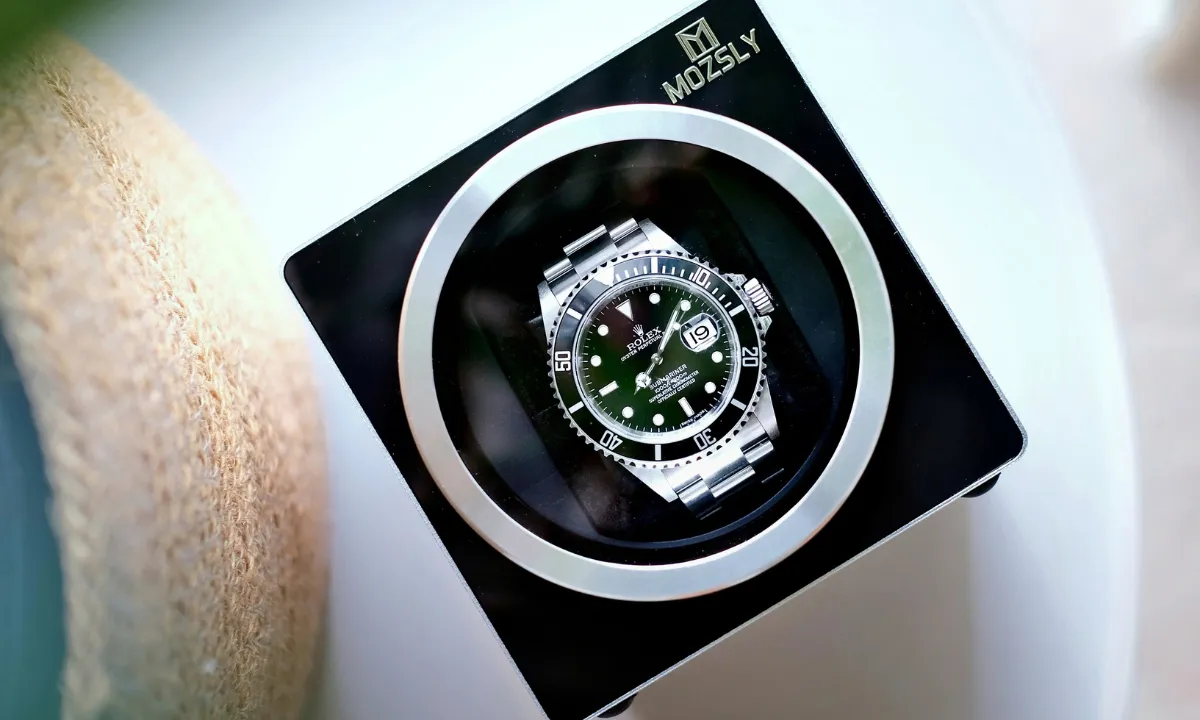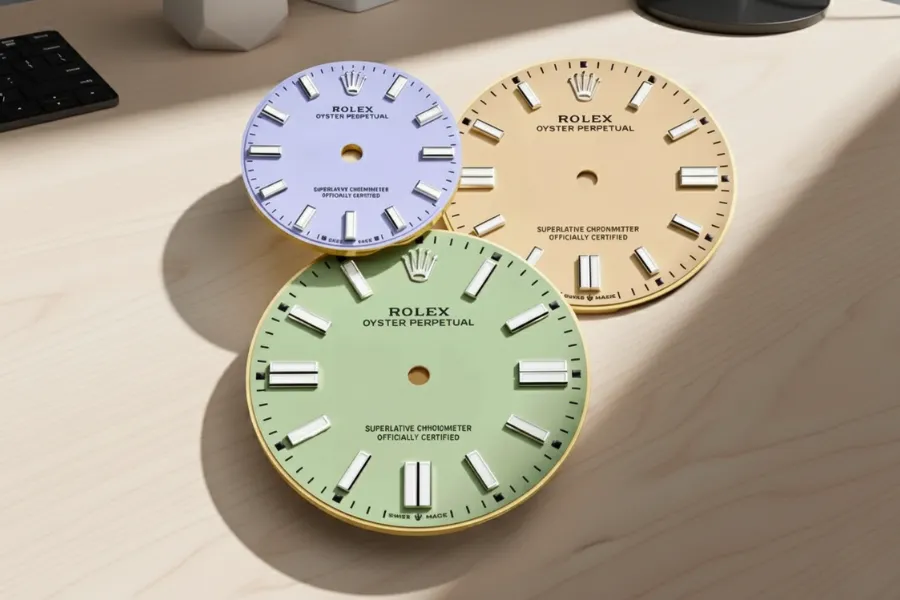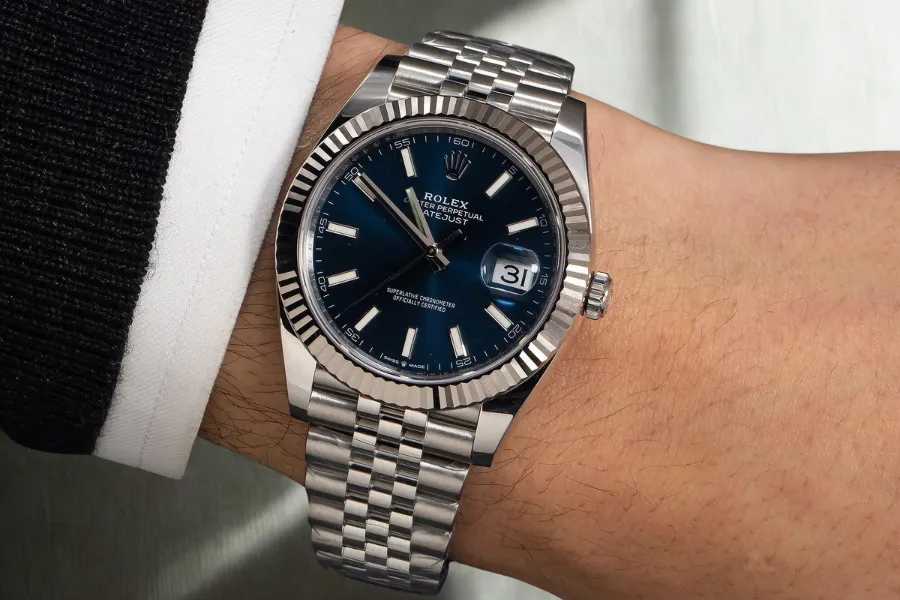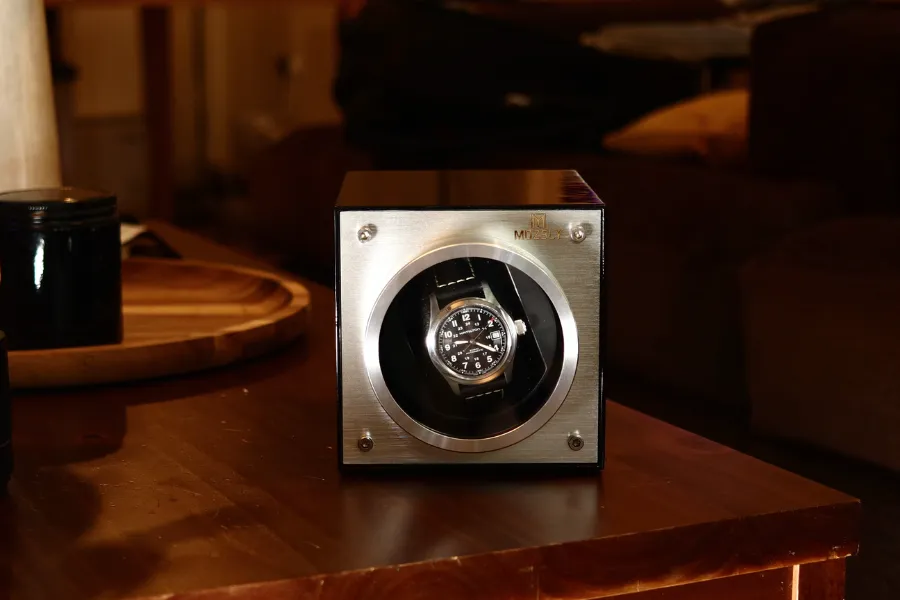Share This Post
You pull open the dresser drawer.
A beam of light hits your $10,000 Rolex, and your brain fires off the same question mine did: “Do I need a watch winder?”
A quick Google search only makes the headache worse. One forum shouts, “Buy the best Rolex watch winder on earth!” The next swears, “Watch winders are bad for Rolex!” Who do you trust?
I felt that stress, too. Resetting the date every Monday wasn’t fun, but the idea of damaging my watch felt worse. So I did the homework—read the manuals, called two service centers, and even tested a winder on my own Submariner.
Here’s what I learned, broken down in plain English so you can decide—confidently—what’s best for your watch.
Rolex’s Official Stance on Watch Winders
Rolex is famously tight-lipped, yet on this topic the answer is refreshingly simple: the brand is neutral. They neither shout “buy a luxury watch winder” nor slap warning labels on the box. Why? Because Rolex believes the most important thing is proper winding, no matter the method.
What Rolex Documentation Actually Says
Here’s the exact wording from a recent Oyster Perpetual manual (Rolex SA, 2023):
“The movement is self-winding. When the watch has not been worn for a prolonged period, we recommend turning the crown clockwise approximately 40 times before wearing.”
Notice what’s missing:
- No line reading “Store in a watch winder.”
- No line reading “Avoid all watch winders.”
Rolex calls their movements “Perpetual” because they wind themselves on your wrist. In other words, are all Rolex watches self winding? Yes—every modern Rolex with “Perpetual” on the dial is automatic. If you plan to leave it in a drawer, Rolex just wants you to give the crown a quick twist before you wear it again. That’s the entire rule book.
What does that mean for you?
- A good watch winder will not void your warranty.
- A bad one could cause damage, which definitely isn’t covered.
- Manual winding is always safe, free, and Rolex-approved.
Service Center Reality Check
To double-check, I called two authorized Rolex service centers—one in New York, one in Los Angeles. Both techs gave me the same story in plain English:
- They’re fine with an automatic watch winder for Rolex if it meets the correct settings.
- They see problems mostly from cheap winders: magnets, rough motors, or wrong rotation.
- “Normal use” to them means wearing the watch or winding it by hand—no hammer drills, no microwaves, no bargain winders that rattle like a lawn mower.
Bottom line: a quality unit won’t harm warranty coverage, but any part that fails due to external abuse (think magnetic motors) is on you.
The Real Risks vs Myths About Watch Winders
The internet loves dramatic myths. Let’s separate fact from fear.
Mechanical Wear Facts
You might hear, “A winder spins nonstop and grinds the gears!” Let’s calm down with a car analogy:
- Idling in the driveway = low wear.
- Zooming down the freeway = high wear.
The best watch winder is more like gentle idling. The rotor turns at a slow, controlled pace—usually 650–900 turns per day (TPD)—far less than a watch gets on an active wrist. Modern Rolex movements use slipping clutches, so they cannot be overwound. The mainspring stops accepting tension once it’s full. Myth busted.
Common Problems That Actually Damage Watches
Real danger comes from poor design or wrong settings:
- Wrong TPD – Too few turns and the watch stops; too many and the rotor free-spins, adding pointless wear.
- Wrong rotation direction – Some movements need clockwise and counter-clockwise. A single-direction winder can cause uneven lubrication.
- Magnetic interference – Cheap motors lack shielding, throwing off accuracy.
- Excessive vibration or noise – If you hear it across the room, imagine what the movement feels inside.
Warning signs? Loud hums, sudden stops, or your watch running wildly fast or slow after a night on the winder.
Do You Actually Need a Watch Winder?
I like clear frameworks, so let’s break owners into three groups.
Daily Wearers (You Probably Don’t Need One)
If you rock the same Datejust Monday to Friday, skip the gadget. Your natural wrist motion provides all the power a Rolex automatic needs. Even if you set it down for the weekend, the 48–72-hour power reserve keeps it ticking. Longer break? Ten seconds of hand-winding on Monday morning solves it.
Multiple Watch Collectors (When It Makes Sense)
I rotate between six watches. Resetting each one twice a month turned into a chore. If you:
- Own five or more pieces
- Switch almost daily
- Value “grab-and-go” convenience
Then a best watch winder for Rolex might save time and headache. That said, invest in quality or stick with manual winding.
Long-Term Storage Scenarios
Some situations tip the scale toward a winder:
- You travel for weeks and want your Submariner ready the moment you land.
- You keep a watch in a safe-deposit box and only pull it out a few times a year.
- You inherited Grandpa’s Explorer and rarely wear it, but want the oils moving.
In these cases, a slow, shielded winder keeps things lubricated without fuss.
Choosing a Rolex-Safe Watch Winder
Ready to shop? Focus on specs, not flashy LEDs.
Critical Technical Specifications for Rolex
- TPD (Turns Per Day) 650–950 – Matches Rolex factory specs. Too high or too low, and accuracy suffers.
- Bidirectional rotation – Rolex winds in both directions; single-direction units are a red flag.
- Ultra-quiet motor (<10 dB) – Noise hints at cheap gears and possible vibration.
- Magnetic shielding – Protects the hairspring from stray fields that cause timing errors.
- Sturdy build – Wood or metal beats thin plastic every time.
A quick note: TPD stands for Turns Per Day. It’s the number of full swings the winder’s drum makes in 24 hours.
Mozsly Watch Winder: Quality Example
After testing three models, my pick is the Mozsly watch winder. It nails the important points:
- Adjustable 650–1250 TPD range.
- True bidirectional mode.
- Whisper-quiet Japanese motor (I can’t hear it over a ticking clock).
- Full magnetic shielding.
- Rugged and durable housing that feels like furniture, not a toy.
Is it the best watch winder for Rolex Datejust or Submariner? You could say that.
In my home lab (read: bedroom dresser), it’s been flawless for six months.
Red Flags That Could Damage Your Rolex
Steer clear of winders that:
- Cost under $100 yet claim “Swiss quality.”
- Rotate in one direction only.
- Offer no TPD control.
- Rattle, buzz, or clunk when starting.
- Use thin plastic gears visible through a clear case.
Any of these can lead to magnetized movements, worn rotor bearings, or timing drift—a pricey repair down the road.
Smart Alternatives to Watch Winders
Not sold on a winder? Fair enough. Here are two zero- or low-cost options.
The Manual Winding Method
Hand-winding is simple and totally free:
- Unscrew the crown until it pops to position 1 (you’ll feel it).
- Turn the crown clockwise about 40 times.
- Stop when you feel gentle resistance; don’t force it.
- Screw the crown back down, finger-tight.
Do this once a week if the watch sits idle. If you hear grinding or the crown feels gritty, stop and have a watchmaker check it.
Strategic Rotation Schedule
Another trick is a wear calendar:
- Set a phone reminder to wear each watch once per week.
- Make Sundays “Rolex day” or rotate models each weekend.
- When traveling, bring one mechanical and one quartz piece to lessen winding work.
- Switch seasons—Submariner in summer, Explorer in winter.
With just a little planning, watch winders for Rolex watches become a want, not a need.
Final Recommendation: Making the Right Choice
I promised clarity, so here’s a quick guide.
Skip the Winder If…
- You own a single Rolex that you wear most days.
- You’re on a tight budget.
- You don’t mind hand-winding after long breaks.
- You fear magnetism or mechanical wear more than resetting the date.
Tips: Keep the watch in a soft pouch, wind it weekly, and check Rolex watch winder settings online only if you ever change your mind.
Invest in Quality If…
- You keep a large collection (five or more pieces).
- You travel often and crave instant readiness.
- You swap watches daily and hate time-setting chores.
- You’re willing to pay for reliability and silence.
In that case, choose a premium unit like the Mozsly watch winder, match the correct TPD, and rest easy.
Conclusion
Rolex sits on the fence about watch winders, and that’s okay. The brand’s only rule is simple: keep your movement wound and protected. Whether you twist the crown by hand, follow a clever rotation schedule, or spring for a recommended watch winder, quality matters more than the label on the box. Use the facts above, pick the plan that fits your lifestyle, and enjoy your Rolex without the noise. Ready to decide? Use our checklist above or drop your specific model in the comments for personalized advice.
Related Post's
Featured Video
Provide an email subscription feature for users to sign up for updates.
Follow the world of watches and cigars for exclusive content!
By subscribing to our newsletter, you will be the first to receive notifications of our latest articles, popular posts and special events.








